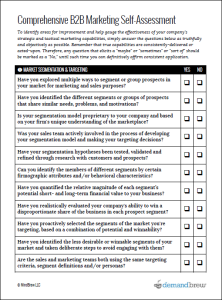According to a popular legend, Winston Churchill once gave a commencement address that consisted of just a few sentences: “Young men, never give up. Never give up! Never give up! Never, never, never-never-never-never!”
In reality, Churchill’s speech was a little bit longer than that, but the key idea was the same. And most B2B sales teams would do well to take his advice to heart.
All too often B2B salespeople disqualify leads that could very well result in a sale. If they don’t hear back from a contact after sending an email and leaving one voice mail, they assume the person isn’t interested and move on.
Dan McDade, CEO of PointClear and the author of The Truth About Leads, explains that multi-touch, multi-media, multi-cycle lead nurturing is often necessary to close high-value deals. In “Getting Beyond the Hype of Marketing Automation Tools”, he tells the story of one campaign targeting the CFOs of large utility companies. They contacted the executives through a variety methods—phone, email and even an overnight package.
In one case, the lead answered their call the forty-second time they contacted him. He said, “Don’t stop calling me! You’re my conscience. I’ve been wanting to talk to you, but I’ve just been extremely busy.” He added, “I saved a couple of the e-mails. I saved a voice mail. I saved a magazine. I really had decided that I was going to talk to you, but I just got busy for the last two or three months. Now, I’m ready.”
Five months after the initial contact, they closed a deal with that CFO for one billion dollars.
The Problem With BANT
Many salespeople evaluate leads based on the BANT principle; that is, they only want to talk to potential customers who have the budget, authority, needs and a timeline to purchase.
But in “Trade Secrets of Effective Lead Generation,” McDade cautions, “A lead that has a budget and a timeframe has a 99.9 percent chance of being won by somebody else.” In those cases, another vendor has already done the hard work of getting the potential customer ready to buy. And the chance that a you can come in at the last minute and make the deal is very slim.
Instead of disqualifying leads that aren’t quite ready to purchase, organizations need a process for cultivating those leads over time. According to McDade, only 35 percent of B2B companies have lead nurturing programs in place, even though multi-touch lead nurturing increases marketing ROI by 300%.
To find out if you’re doing enough to nurture leads, take the self-assessment titled, “Five Signs You’re Missing Sales Opportunties.” And be sure to listen to McDade’s Interviews on lead generation and marketing automation.






